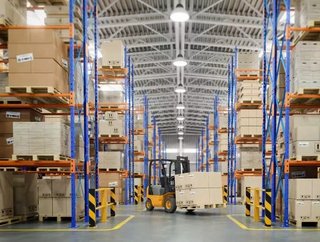Six trends shaping warehouses of the future

In 2010, many warehouses would still have been regarded as a neglected cost centre.
Now, moving into 2020, the warehouse is a carefully managed control centre and very often the strategic hub of e-commerce within an ever-extending supply chain. Exciting as it is to be entering a new decade, the business landscape has been transformed, with the arrival of many different challenges, some of which depend on where in the world your warehouse operations are located.
In Europe and the US, priorities centre around making investments in automation to achieve order fulfilment targets and retaining the workers needed to sustain growth objectives. In Asia and other developing countries, attentions are directed elsewhere - towards ensuring reliable Internet connectivity and efficient transportation. One key trend that every region shares, is the arrival of social commerce and digital transformation, with business transactions at all levels continuing to migrate online, albeit at very different rates.
Indigo has been helping customers to optimise warehouse productivity and improve process efficiency inside warehouses for over four decades. Here are our six key global trends to be watching out for in 2020:
Dropshipping will increase substantially
E-commerce and direct-to-consumer growth will continue to transform the fulfilment operations of retailers, manufacturers, plus their wholesalers and 3PLs. Many manufacturers and wholesalers have already started dropshipping and have disintermediated their retail partners. This trend will accelerate because it allows the seller to improve profit margins and create direct customer relationships, by building up their direct-to-consumer channels. Logistics service providers / 3PLs are also benefiting from this trend, by obtaining business from retailers that are looking to outsource some of their direct-to-consumer fulfilment.
Time to delivery becomes a key competitive differentiator
Price is no longer the main competitive differentiator. How long it takes to receive an item is becoming just as important, as Amazon has shown the industry. Fulfilment responsiveness (the time it takes from order receipt to final delivery) will increase over the next three years. In a recent ARC Advisory Group study, 77% of respondents reported they expected it to increase in importance, significantly higher than the results for the same question in 2016.
Social media commerce returns will make reverse logistics even more important
Reverse logistics was already an issue for many sellers and will become even more so in the future, thanks to the so called ‘Instagram effect’. Research into online shoppers shows 34% will make more impulse buys as social media sites make it easier to buy products directly, through in-platform selling tools. Once Instagram launches its ‘Buy on Instagram’ and ‘Instagram Checkout’ tools, it goes without saying that these impulse shoppers will end-up sending more of their purchases back to retailers. Social media buyers are expected to account for a fifth of all online shoppers who make returns.
Flexible pick methods for multiple order profiles
Picking methods like batch pick and sort will become more common, as they are ideal for cost efficiently processing high volumes of small orders as quickly as possible. Multiple orders or shipments can be picked simultaneously and then grouped into individual orders, greatly increasing the throughput possible in a warehouse by reducing travel times to gather stock items. Social or e-commerce orders can then be released in the shortest possible time for the lowest cost possible – essential if extra resources are to be utilised during returns management. If the warehouse is exceptionally busy, with a large number of pickers and different product SKUs, wave picking can also be highly efficient. This is because it cuts down on congestion between locations and allows orders to be grouped into zones for optimum productivity.
New workarounds to overcome labour shortages
In Europe and the US, a tight labour market remains one of the overriding challenges for warehouse operations managers. In a recent study, 50% of respondents said that an inability to attract and retain a qualified hourly workforce was a critical issue. For 2020 and beyond, multiple methods of strengthening warehouse workforces will be necessary, ranging from increasing pay, to offering enhanced training and benefits. Investing in operatives, for instance, by offering personal development and soft skills training opportunities, will be essential for companies to attract and retain the people they need to achieve their e-commerce and omnichannel expansion goals.
Investing in a WMS is increasingly common
An efficient warehouse runs on technology and the investment priorities of warehouse executives show that tried and tested technologies - such as a warehouse management system (WMS) and partial automation using conveyors or automated sortation systems remain top priorities. Once these essential items are in place, other supporting technologies including transport management systems, voice recognition for picking and putaway, AGVs, and palletisers are also top investment priorities.
By Mark Wilkinson, Supply Chain Consultancy Manager at Indigo Software
- BEUMER Group’s Vision for the Warehousing Operations of 2035Operations
- How the C3 AI Supply Chain Suite Drives Increased ResilienceTechnology
- The Art of Supply Chain Planning with Gartner, SAP, KinaxisSupply Chain Risk Management
- Top 100 Women 2024: Stephanie Rankin Smith – No. 8Operations






